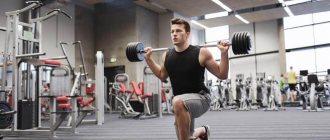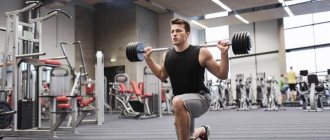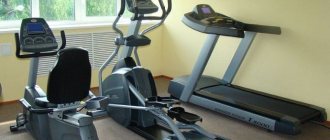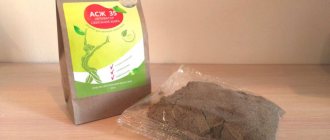Anyone familiar with sports and fitness knows the role of cardio in keeping fat levels low. Find out how to make your cardio workout more effective!
Of course, special cardio training for burning fat is necessary for everyone who wants to get rid of extra pounds. Cardio keeps your body fat levels low, allowing you to see all the muscle you've built from years of hard training.
Long-term cardio training has a positive effect on the cardiovascular system, training the heart muscle, and you become more resilient.
At the same time, many will agree that as beneficial as cardio is, it is also boring. And if you don't force yourself, you won't spend your morning sweating on the treadmill for an endlessly long and boring hour.
In this article, you will learn how to improve your cardio workouts for weight loss and make them faster, easier and less boring.
Types of cardio workouts to burn fat
First, let's look at 5 different types of cardio workouts for burning fat, including continuous training, interval training, fartlek training, super circuit training, and cross training.
Long-term training to burn fat
Also known as long-distance or steady-state cardio.
It involves training at the same load for an extended period of time, usually 40-60 minutes without rest. An example of this style of training would be a long run on a treadmill at a constant speed of 8-10 km per hour. The execution is simple and safe, making it a great choice for all fitness levels. In this case, it is important to determine the optimal heart rate for burning fat.
In general, you need to use the formula mHR = 220 - your age and then use the following table as a guide.
The training can and should be done on different cardio equipment. To do this you should:
- Buy a gym membership
- Use a ladder to simulate a stepper
- Buy a rowing machine or ellipse for home
It is also important to maintain feedback with your body to avoid overtraining. To do this, the following tests and samples will help you.
- Orthostatic test and methods for its implementation
- Ruffier and Ruffier-Dixon test for functional testing
Interval training
Interval cardio training for weight loss can also be used for all fitness levels. It involves a high-intensity workout that gets your heart rate up for a short period of time, followed by an easy recovery period.
This is a great option if you quickly get bored with a monotonous workout and want to vary the intensity throughout the workout. For example, run for 2 minutes at a speed of 10-12 km/h, then jog 8 km/h slowly for 3 minutes to recover.
This sequence is repeated for the required amount of time, usually 20 - 40 minutes. This style of training increases your heart rate significantly and the duration of the workout is shorter. Consider the following examples of interval cardio with running.
Short and very short intervals in zones 3 and 5
- Warm-up: 20 min. in zone 1-2 (3-4 out of 10). You start with very light pedaling and gradually increase the effort, making the gear heavier. Inside the warm-up there are 7 accelerations for 10 seconds. (8-9 out of 10) with 50 sec cooldown. between them.
- Main set: - 3 intervals of 2 minutes. in the 3rd zone (6-7 out of 10) with recovery 2 min. Cadence - 90+ - Each subsequent interval should be a little more powerful. - 10 min. easy - 2nd zone (4 out of 10). — 6 intervals of 10 seconds. in the 5th zone (8 out of 10). — Cadence 100+
- Cool down: until the end of the workout time in zone 2 (4 out of 10) at cadence 90.
6 x 400 meters in the arena or stadium
- Warm-up: 20 min. with 5 sprints of 10 seconds. and 50 sec. easy running between them. If you have the opportunity to run in an arena or on a track, then it is better to do the warm-up barefoot. You can't run barefoot with poor form.
- Main set: - 6 x 400m with 400m recovery between intervals. Recovery is very slow. You can go. Each next interval is a little faster. — Next 10 minutes. easy in the 2nd zone. - 4 x 200 m with recovery of 200 m between intervals.
- Hitch. It's easy until the end of the workout. If at the stadium, then in the opposite direction and along the outermost path.
And you can come up with many such combinations for your level of training with ease.
Fartlek
Fartlek (a type of interval training with constant changes of pace of movement) is similar to interval training, only it is less structured. It places high demands on the trainee and is more suitable for people with an advanced level of physical fitness.
Alternation involves intense interval training and recovery periods that are not systematic. They oscillate between high speed, high intensity, anaerobic work and low intensity, recovery periods.
An example of a Fartlek workout, taking into account the pole task:
- Warm up for 10 minutes very calmly. So, to talk to your friend running next to you.
- Main set: - 15 sec. fast (sprint in zone 5) /45 sec. slowly. — 30 sec. very fast (sprint in zone 5)/30 sec. slowly. — 1 min (tempo at the upper limit of the 3rd zone) / 1 min. easy, but don't go. — 2 min (tempo at the upper limit of the 3rd zone) / 1 min. easily. — 3 min (tempo at the upper limit of the 3rd zone) / 1 min. 30 sec. easily. - then down 3 min./2 min./1 min./30 sec.
- Cool down in zone 2 until the end of the workout time.
You can find running training plans on the blog of triathlete coach Mikhail Ivanov.
Super circuit training
Super circuit training is also called an aerobic circuit training and involves alternating short periods of cardio exercise for weight loss with short periods of anaerobic exercise such as weight training.
An example would be 3 minutes on the elliptical, then 1 minute of squats, then three minutes on the treadmill, and one minute of leg presses.
This is the best way to maximize the effectiveness of your cardio workout to burn fat in the least amount of time. It’s hard to get bored while doing it, suitable for all levels of physical fitness.
Super circuit training is a great option for athletes and bodybuilders to train before a competition. This type of training ensures the maintenance of muscle mass while simultaneously destroying subcutaneous fat in a minimum amount of time.
What is cardio
The name “cardio”, in fact, comes from the Greek word kardio - heart. Therefore, in theory, cardio training is training the cardiovascular system. However, in fitness rooms, “cardio” began to include any aerobic exercise in general: running, walking on an elliptical, cycling and most group exercises.
Actually, cardio training, namely training the heart and cardiovascular system, is most effective within a certain heart rate range, so you need to constantly monitor it.
You can determine your personal range accurately and individually by passing a test on a gas analyzer (here are our impressions of this procedure).
Or just use the approximate formula: 220 - your age = your maximum heart rate . Cardio training should take place between 60% and 80% of your maximum heart rate. Accordingly, for a 30-year-old person this range is approximately 114-152 beats per minute. If you train below the lower limit, the training will not bring tangible benefits, if higher and without proper preparation, it can do harm.
This is how the “cardio” and “fat burning” zones on the machines are marked, but don’t rush to believe them.
The topic of the pulse zone for fat burning is also very popular (possibly because it is often marked on cardio equipment in gyms): this zone is also determined individually using a gas analyzer test and it is slightly lower: about 60-70% of the maximum heart rate (115-135 beats/ min for the average 30-year-old person).
However, the most important thing about this is that cardio training for fat loss can be effective, like any other activity, but strength training is best (see below: why cardio training is not the best way to lose weight).
Cardio training - maintenance
Interval training
Treadmill training
- 45 seconds of fast walking, then 2 minutes of walking at an average speed. Do 5 sets, but gradually try to increase them to 7.
- Body part: Quadriceps Equipment: Exercise
Treadmill workout
- 4-5 minutes of slow walking.
- Body part: Quadriceps Equipment: Exercise
Treadmill workout
- 25 minutes of walking at an average speed. Gradually increase the time to 30 minutes.
- Body part: Quadriceps Equipment: Exercise
Add to Calendar * Add to My Workouts * Print Workout
* — The service is in beta testing
Intensity of cardio training program for weight loss
Apart from the different types of cardio exercises, you should also be aware of the frequency, duration and intensity of your workouts. The American College of Sports Medicine recommends a minimum of 3 to 5 sessions per week for 20 to 60 minutes, at 55/65% to 90% of your maximum heart rate.
Of course, the individual characteristics of the body should be taken into account. During the off-season, most athletes and bodybuilders work out 2-4 times a week to maintain weight and stimulate muscle growth. Before competitions, the number can increase to 7-14 per week, 45-60 minutes each.
Incorporate all five types of cardio into your weekly workouts. This will ensure continuous progress and reduce the possibility of burnout. Another fun option is to include some fun cardio, such as your favorite sport, on one day of your weekly routine.
This is a great way to relieve stress, give you the opportunity to chat with friends or family and have a good time.
Many people wonder what type of cardio exercise is best. The answer: the one you enjoy the most and whose workouts you least want to miss.
Anything you don't like will usually be done without your best effort, which will ultimately lead to mediocre results. Do what you enjoy and you won't feel like you're working.
How to properly organize your diet
You have already determined for yourself how many times a week to do cardio training. Now it is very important to organize proper nutrition. Without a reasonable approach, significant harm can be caused to the body. You need to watch your calorie intake. The diet must include proteins (meat, cottage cheese, etc.), low-carbohydrate foods, including vegetables. An adjusted, competent diet will help not only to lose weight, but also to gain a flourishing appearance. The main bonuses will be good health and stamina.
Cardio warm-up at home and in the gym
Circular - 3 laps
Easy jumping in place
- 30 seconds
- Body part: Calves Equipment: Other
Jumping forward in a half squat
- 30 seconds
- Body part: Quadriceps Equipment: Body weight
High jump with uneven leg
- 5 reps on each leg
- Body part: Quadriceps Equipment: Body weight
Jumping rope
- 30 seconds
- Body part: Calves Equipment: Other
Add to Calendar * Add to My Workouts * Print Workout
* — The service is in beta testing
How to do the workout
The workout consists of six exercises:
- 20 jumps “legs together - legs apart” (Jumping Jacks).
- 20 air squats.
- 10 jumping burpees.
- 20 times - exercise "bicycle".
- 20 jumping lunges (10 on each leg).
- 10 push-ups with arm and leg raises.
As soon as you finish one exercise, move on to the next without rest. When you do the latter, rest for one minute and then start over. You need to do five laps in total.
What is the difference between cardio training and strength training?
Cardio exercise is a type of aerobic exercise in which we keep our heart rate in a relatively stable range. During aerobic exercise, muscles use oxygen to burn carbohydrates and fats.
Strength training is a type of anaerobic training in which muscles rely on chemical reactions without the participation of oxygen - the energy source is glycogen.
Aerobic or anaerobic training: what to do first?
If you go to the gym and observe, many women do cardio first and then strength training. But in most cases this is the wrong approach. It's better to do strength training first and then cardio. This is the right way to structure your workout, in which the muscles are optimally loaded and the production of the necessary hormones is stimulated.
Strength training should be done approximately 90-120 minutes after eating. They should never be performed on an empty stomach because the body will not be loaded with glycogen (anaerobic muscle fuel). And since fat burning requires oxygen, fat stores are not reached during the strength training itself. The source of energy is glycogen. After you finish your exercise and everything goes according to plan, your body uses up a lot of glycogen.
Now it's time for cardio training. It is aimed at burning fat. The only available source of energy is fatty acids because we burned glycogen during strength training. The effect is the same as fasted cardio because glycogen levels are low after sleep (with a properly designed diet).
This type of training provides the following benefits and results:
- During strength training, we burn glycogen for full cardio.
- Strength training helps speed up your metabolism because damage to muscle fibers leads to increased insulin sensitivity.
- After strength training, your metabolism remains elevated for up to 48 hours. This means faster weight loss and fat loss.
- During cardio training, the body focuses on fat deposits and burns fat.
What happens if we do cardio first?
If all other factors remain unchanged, the following results.
We go to training 90-120 minutes after eating. Glycogen stores are full. We start with cardio training, aerobic training. Unfortunately, the first source of energy is glycogen. We do a 30-40 minute cardio workout where we burn glycogen but don't achieve fat burning because the body has a readily available energy source that it prefers to use.
We finish the cardio and start strength training. Strength training is anaerobic - without oxygen. The body cannot access fats and use them for energy. And glycogen is already depleted.
The body panics and begins to break down muscle protein to get the energy it needs. This is how we get fat!
What happens to the body and what is the effect in this scenario:
- Muscle protein breakdown and muscle loss (catabolism).
- Stimulating the production of stress hormones - cortisol and adrenaline.
- Inhibition of the synthesis of anabolic hormones - testosterone and growth hormone (extremely important for building lean muscle mass and burning fat).
So what should you choose?
If you do cardio, always do it after strength training or in the morning on an empty stomach. This is the time when your efforts will truly pay off. Take advantage of this time window!
Try not to overdo it - 20-40 minutes of cardio is enough. Strength training should also not last more than 45 minutes, and the total workout (anaerobic part + aerobic part) should not last more than an hour and a half.
Everything you need to know about cardio
Experienced athletes advise including cardio exercises in every workout. What does this give?
- strengthening the heart muscle, which significantly minimizes the risks of heart attack and diabetes;
- getting rid of excess weight;
- increasing the overall tone of the body;
- relieving tension and stress, improving sleep;
Cardio exercise options:
- Running is the easiest and most accessible way for absolutely everyone. However, it is worth remembering that you need to run only in special sneakers with arch support, otherwise you risk getting painful sensations in your knees and shins.
- Cycling or exercise bike. It is very convenient to regulate the speed and load.
- Elliptical trainer.
- Swimming. Many clubs now have swimming pools, so starting your workout with swimming is great!
- Step aerobics. You can practice both at home and in the gym under the guidance of an instructor.
- Walking. This workout can be done anytime and almost anywhere. The only thing to remember is sufficient hand work, which is often forgotten.
- Jump rope.
- Boxing and kickboxing.
Remember that there is no “perfect” cardio workout because cardio includes any physical activity that increases your heart rate. Alternate types of cardio workouts, change equipment so that the workout is not unbearably boring.
How long to do cardio?
For beginners, a few minutes of training will be optimal, which can gradually be increased to 30 minutes. Some sources recommend doing a full hour of cardio exercise. But if you don't have that much free time, give them as many minutes as you can. It's better than not doing cardio. But it’s worth remembering that everything is good in moderation and there’s no need to exhaust yourself with hours of cardio exercises either. This will lead to overtraining, chronic fatigue, and will not have the best effect on your form.
When to do it?
In the morning on an empty stomach.
What's the point? The fact is that in the morning, after fasting all night, the level of hormones in the body is optimal for burning fat, and the blood sugar level in the morning is also low. Therefore, your body will take the energy to perform exercises from fat deposits, and not from the food you eat. The intensity of fasting cardio should be low or medium, the duration should be long. Cardio training should be regular. When performing cardio on an empty stomach, it makes sense to take BCAAs 15-20 minutes before training, this will increase the level of amino acids in the blood and protect your muscles from catabolism (destruction).
After strength training.
Strength training is done with maximum efficiency, at this time glycogen is actively spent, again, subject to proper nutrition. At the end of the cardio workout, there is some remaining strength and a lack of glucose in the blood. The main energy source during cardio exercises should be fat.
Before strength training.
Many people believe that half an hour of work on a cardio machine will deplete glycogen stores, and during strength training the main source of energy will be fat. What is the fact: the energy required for effective strength training is wasted on cardio. The strength part of the training takes place without proper impact and intensity. Protein and only a small part of fat are used as an energy source.
The result: incompletely developed muscles, increased joint wear, significant loss of protein with minimal fat consumption.
Strength and cardio training are separate from each other.
If you have the opportunity to train more than three times a week or twice a day, then it makes sense to separate your cardio and strength training.
What is the “optimal zone”?
During cardio training, you need to monitor your heart rate. Optimal heart rate indicators are calculated using the formula:
Minimum heart rate threshold = (220 - age) x 0.6 Maximum heart rate threshold = (220 - age) x 0.8
It is necessary to calculate these indicators for yourself in advance during cardio exercise, that is, the specific parameters of the “optimal” zone, so as not to violate them if possible. If your heart rate during training is lower than the figure calculated by the formula, then you are not working hard. And if your heart rate is higher, then not only fat is “burned”, but also precious muscles!
How to properly add cardio to your workouts depends on your goals. The most important thing is that it’s not enough to just read and choose, you have to force yourself to overcome your laziness. Have a good workout and success in achieving your goals!
The right motivation for cardio
Now you know what types of cardio workouts to do to burn fat, when and how much to do it, and how to change your program.
But sometimes it happens that you still get bored during your workout and wish you were in a warm bed instead of on the treadmill. For such a case, there are also approaches.
- The first way to increase motivation is to train with a partner. You'll have someone to talk to and someone to push you to do your workout.
- You can also read your favorite running, fitness and bodybuilding magazines, or just good books. If your gym doesn't have one, you can buy a magazine holder.
- Another way to complete a cardio workout to burn fat is to listen to music that pumps you up while doing it. Now there are many portable players that are easy to attach and do not interfere with your workout.
- Outdoor activities are another great motivational tool. Being around sweaty bodies and monotonous equipment for 60 minutes can really get tiring, not to mention the hot, stale air of the gym.
Get outside and enjoy the cool, fresh air, bright sunshine and ever-changing scenery. Your workout will go unnoticed.
Supplements for Fat Burning and Cardio
We recommend the following cardio supplements for weight loss and aerobic endurance.
| Protein isolate | It features a deep degree of purification from impurities. Contains less lactose and fat, but more pure protein. Taking isolate is recommended for those who want to lose weight. |
| Isotonic | Replenishes fluid and microelements during physical activity. Brings the water-salt balance to the physiological norm. |
| Glucosamine and chondroitin | Fills joints, ligaments and tendons with essential substances for prevention or recovery after injury |
| Vitamin-mineral complex | During intense physical activity, vitamins and minerals are consumed by the body faster. They are also responsible for protein synthesis and are the engine of metabolic processes. |
| BCAAs | Allows muscle fibers to recover faster and provides building material for the growth of lean muscle mass. |
How long to do cardio
Experts advise doing cardio for at least 30 minutes in order for the workout to have at least some effect. But do not forget that if you are completely new to the gym, then you need to start with easy 10-15 minute workouts and gradually increase the load.
Keep in mind that doing cardio for more than an hour can negatively impact muscle growth. Scientists have discovered that although aerobics “burns” fat, after an hour of exercise the body switches to muscle tissue. After 2 hours of cardio training, the body loses up to 90% of leucine, an important amino acid, including one necessary for muscle growth.
Multiple “Mr. Olympia” Jay Cutler does not disdain cardio during the fat burning period.
Here’s what one of the most famous jocks in the world, Jay Cutler, says: “during the preparation for the competition, I decided to push the aerobics and extended the aerobic training to an hour and a half. Immediately I noticed that there was less strength, the muscles “shrank” and lost their usual elasticity. Since then, I have been doing cardio for no longer than 45-50 minutes.”
Cardio Supplements
BioTech | Iso Whey Zero?
- Iso Whey ZERO is made from the purest whey protein isolate produced by cross-flow microfiltration.
- Category: Whey Protein Isolate Category details
mix 1 scoop with 250-350 ml of water or milk and drink after training 30-40 minutes later
DOES NOT CONTAIN lactose, trans fats or sugar. Iso Whey ZERO, like all BioTech USA products, is made from safe and carefully selected nutrients. Due to the extremely high biological value of its proteins, Iso Whey ZERO is a completely unique product in the BioTech USA product line. It is ideal for athletes looking to build lean muscle mass because... Proteins contribute to the growth of muscle mass and maintenance of its shape. High content of BCAA, L-glutamine and essential amino acids.
Olimp Sport Nutrition | ISO Plus Powder?
- Concentrate for preparing an isotonic drink in powder, with the addition of L-carnitine and L-glutamine. Thanks to this combination, the product will help support your body during prolonged physical activity.
- Category: Isotonic drinks
Directions for Use: Use as needed, especially during intense physical activity. Recommendations for preparation: 17.5 g of powder (2 tablespoons) in 250 ml of water.
Ingredients: sugar, maltodextrins, glucose, fructose, acidity regulator, sodium chloride, potassium phosphate, calcium phosphate, sodium citrate, magnesium carbonate, thickener, flavorings, L-glutamine, L-carnitine, vitamins, flavoring.
Animal | Flex?
- Animal Flex is designed to make your joints and ligaments stronger and to protect them from overuse during training.
- Category: For joints and ligaments
One sachet per day. You can take it with food or on an empty stomach.
A complex product from the American branded sports nutrition manufacturer Universal Nutrition Animal Flex 44pac is also a chondoprotector that enhances the regeneration of connective cartilage and joints. Each packet of Animal Flex contains several key complexes of substances that protect your joints. A powerful complex based on glucosamine and chondroitin that helps restore connective tissue. A complex of substances with cetyl myristoleate that improves joint lubrication and thereby alleviates the stress of lifting weights during training. A complex that promotes the restoration of ligaments and relieves inflammation. A vitamin and mineral mixture that further contributes to the preservation and maintenance of healthy joints and ligaments. Animal Flex is a complete and effective formula for serious results. Remember, joints are very difficult to treat! During power loads, they require constant prophylaxis with special medications.
BioTech | One-a-day?
- One-a-Day's balanced multivitamin will provide you with all the micronutrients you need throughout the day.
- Category: Vitamin-mineral complex More about the category
1 tablet per day with a glass of water. The supplement should be taken in courses of 4-6 weeks, after which the same break should be taken
It is important to ensure adequate intake of vitamins and minerals. This is necessary for everyone who cares about their health. Ingredients: (besides those listed): Whey (milk), stearic acid, magnesium stearate, pharmaceutical glaze. Made in a GMP facility using milk, soy, egg, peanuts.
Geneticlab Nutrition | BCAA Pro?
- Geneticlab “BCAA Pro” is a modern sports supplement based on the essential amino acids BCAA, glutamine and a specially selected amino acid matrix, in an optimal ratio of 4:1:1.
- Category: BCAA More about the category
mix 1 scoop per 350-400 ml of water or other drink and take 30 minutes before and immediately after training
BCAA Pro will provide energy, improve metabolism, protect muscles from catabolism and help get rid of excess fat. Your workouts will become more intense and effective.
Sports nutrition recommendations are indicative only. Before purchasing, we recommend that you consult with a specialist in the store.
IS IT POSSIBLE TO DO CARDIO AND STILL OBSERVE FURTHER MUSCLE GROWTH?
Several decades ago, it was discovered that 10 weeks of cardio along with strength training had a negative effect on muscle growth compared to strength training alone. /1/ However, if you look at the volume of training in this study - 6 days a week cardio training and 5 days a week strength training - you can conclude that this regimen is quite difficult to stick to. Few of us will do 30 to 40 minutes of cardio six days a week.
Recent research also shows that optimal amounts of cardio can actually enhance the effects of strength training. Research has shown that strength training combined with 2-3 days of cardio can lead to greater muscle growth than strength training alone. /2,3/
What to take note from this? It seems like the sweet spot is a combination of cardio and strength training. Too much cardio can reduce muscle growth, however, at the same time, not enough cardio can limit muscle growth. Doing cardio workouts 2-3 days a week is the right choice to increase muscle mass without compromising your muscles .
Cardio for weight loss 1-4 weeks
Treadmill workout
- 3-5 minutes, 1 repetition
- Body part: Quadriceps Equipment: Exercise
Treadmill workout
- Walking on a treadmill. 2 minutes of fast walking, 2 minutes of walking at medium speed. This will be 1 approach. Do 3 of these sets and increase the number of repetitions every week until you reach 5-7
- Body part: Quadriceps Equipment: Exercise
Treadmill workout
- Walking on a treadmill. 3-5 minutes of easy walking at low speed.
- Body part: Quadriceps Equipment: Exercise
Add to Calendar * Add to My Workouts * Print Workout
* — The service is in beta testing











